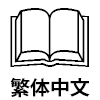MAINSPACE EXHIBITION /

The Artist Should Have Value
Jo-Anne Balcaen
November 4 – December 17, 2016
Essay
What’s going on? (On art, aura, and anecdotes)
Expertly straddling the high/low-art divide, Jo-Anne Balcaen is as much at ease mimicking the neutral façade associated with conceptual art as she is embodying the uncritical perspective of fandom. While her earlier works frequently focused on pop music and its associated culture, the more recent works comprising The Artist Should Have Value delve into the often hidden inner workings of the art world—what sociologist Pierre Bourdieu called les règles de l’art, the widely accepted “rules” around which the value of artists and artworks is constructed and consolidated within Euroamerican art history, institutions, art markets, and art scenes.
Displaying the slick aesthetic of magazine ads for luxury goods, the photograph Jeff Koons Studio Chip shows a miniscule chip of paint from the exterior studio walls of the famous American artist prominently placed—and reflected—on a mirror. Unabashedly pop in sensibility, Koons is viewed by some as a genius in the tradition of Warhol; others consider him merely a con artist. Balcaen’s photograph seemingly suggests that it is money and its shiny aura that cloak his artworks, further feeding into the sales and collection of Koons’ work at exorbitant prices.
In GNKDA Mystic Grey, Balcaen continues her exploration of the construction of aura through paint, in this case vis-à-vis Canadian artists Garry Neill Kennedy and David Altmejd. Though these artists are at opposite ends of the spectrum in terms of style, approach, and age (Kennedy is recognized as a pioneer in the conceptual art movement dating back to his involvement at NSCAD in the 1960s, while Altmejd, who emerged in the early 2000s, is known for his neo-baroque sculptures), what they notably share is that both have managed to make a name for themselves internationally. Balcaen gleaned the leftovers from cans of paint used for past exhibitions by these artists in order to mix a brand-new colour (presented in a shiny new can) whose “mystic” grey hue ostensibly holds the secret to artistic success, capable of elevating any exhibition to a higher plane. Through this re-contextualisation of a product easily found in hardware stores, Balcaen shows how artistic value can be projected, amplified, and commodified.
In The Absolute Artist, art historian Catherine M. Sousloff argues that, since the Renaissance, the Western mythologizing of the “artist as genius” has been established and legitimized through the telling of biographical anecdotes— tales of incredible ingenuity, creative brilliance, skillful technique, and so on. This conflation of artist and anecdote is still strategically used by gallerists, critics, and art historians alike as a way of offering insight into an artist’s oeuvre, providing contextualizing gravitas to a work or endowing it with an air of authenticity. Switching from the detached tone of the works described above, Balcaen plays with the artist-as-genius trope in the following works by bringing the typically “behind-the-scenes” narratives to the fore as her main subject. Balcaen eschews the standard narratives told to augment the value of an artwork, instead sharing what most artists might prefer to hide, including a spectrum of vulnerable moments marked by shame, jealousy, and rejection.
The eponymous artwork The Artist Should Have Value juxtaposes two readings of an early work by Balcaen: an unknown student’s school assignment in Prezi format that she found online, which rather perfunctorily examines the work’s formal characteristics, versus her more personal analysis in which she links the making of the work with a painful breakup. In the video Mount Rundle, Balcaen focuses on a painting that she made as a child from a photograph of a landscape that, years later, she encountered by happenstance while attending the prestigious artist residency program in Banff. At first it seems that Balcaen will suggest that her profession is one of destiny, but as her narration of the video continues, she instead recounts the crippling artist’s block and insecurity she experienced during the residency and ends on her somewhat gleeful realization that the other artists-in-residence only appeared productive. Finally, in a print series titled State of Mind (Grumpy Thoughts about Art), Balcaen spells out—in a misleadingly cheerful marquee-style typeface—her musings on her experiences as an artist. Expressing resentment, cynicism, and melancholy, with only fleeting glimmers of hope and humour, these brief “poems” distill the social, creative, and financial stresses faced by many artists as they struggle to “make it”…or at least make a living.
The exhibition’s title The Artist Should Have Value evokes both an appeal and an unanswered question by an artist armed with an intimate understanding of what’s going on beneath the surface—be it in the studio or a gallery. Whether operating in confessional mode or expressing her ambivalence about the art world, Jo-Anne Balcaen critically unveils the complex tension between what’s really going on and what might be just smoke and mirrors.
— Zoë Chan





Jo-Anne Balcaen (b. 1971 in La Broquerie, Manitoba) is a Montreal-based artist whose art practice extends across a variety of media including installation, sculpture, photography video, and text, bringing together references as diverse as popular music, the art world, and cultural management. Her work has been presented throughout Canada, the US and Europe, including solo exhibitions at venues such as Truck (Calgary), AceArt (Winnipeg), eyelevel gallery (Halifax), and Galerie Clark, La Centrale, and Galerie B-312 (Montreal). She has received several provincial and national arts grants, and has attended residencies at the Banff Centre, and the Canada Council’s International Residency at the ISCP in New York.
Zoë Chan is an independent curator and critic. Her curatorial projects have been presented at MSVU Art Gallery, Foreman Art Gallery of Bishop’s University, Articule, and the MAI (Montréal, arts interculturels). She has written for Canadian Art, C Magazine, esse arts + opinions, and Momus, among other publications. She was a recipient of the Canada Council for the Arts’ Joan Lowndes Award for excellence in critical or curatorial writing in 2015.

